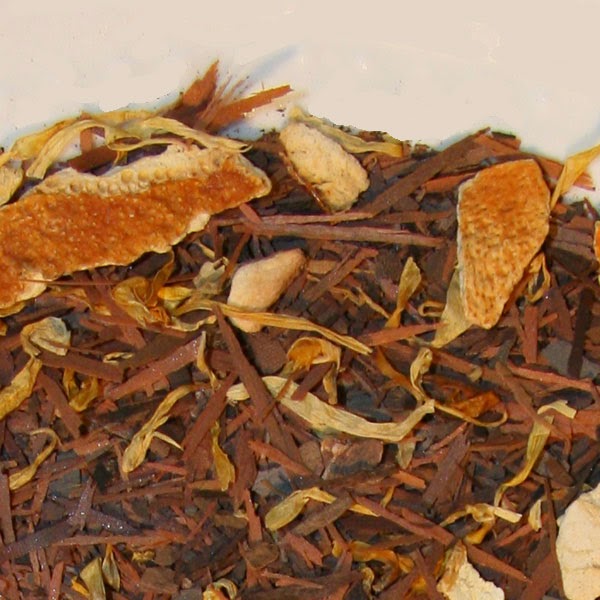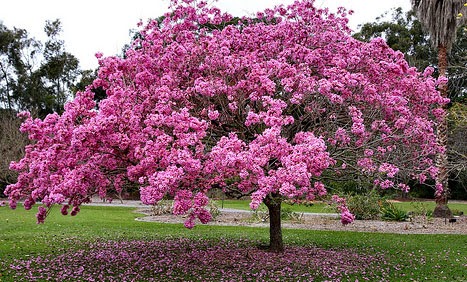Sunday, March 22, 2015
PAU D'ARCO
PAU D'ARCO: Tabebuia Impetiginosa, Tabebuia Heptaphylla
Also known as: Taheebo, Tabebuia, Lapacho, Purple Lapacho, Ipe
Parts used: inner bark
Meridians/Organs affected: pancreas, digestive, skin, blood, liver, lungs, structural, circulatory
Properties: anti-fungal, anti-parasitic, digestive, anti-carcinogenic, antibacterial, alterative, hypotensive, bitter tonic, anti-tumor, anti-diabetic, astringent, depurant, diuretic, anti-pyretic
Pau d'arco is a member of the Bignoniaceae family which is a species of plants known for their woody and/or vine-like nature. It does indeed have very hard wood and is used by the native south american indians for their hunting bows. It is a deciduous tree that grows mostly in Argentina and Brazil but can be found in other parts of Central and South America, the Bahamas and even India. It can get up to 150 feet tall and be 6 feet in diameter. There are several different varieties of pau d'arco that are readily identified by their floral colors and/or leaf configurations. The trees with red, pink or violet flowers were the preferred medicinal types while the yellow flower types were considered far inferior. The commonly accepted variety for medicinal use now is the violet flowered taheebo from Argentina (Tabebuia Heptaphylla). Argentina is the main supplier of the violet kind while Brazil supplies the red and yellow varieties. The inner bark is what is used as a medicine and peeled in vertical strips from the tree and then meticulously separated from the outer bark for use.
Pau d'arco is one of those herbs that deserves a second look. The Calloway indians in South America (thought to be the descendants of the Incas), have used this herb for eczema, fungal infections, psoriasis, hemorrhoids, skin cancer and a number of other ailments. As they were able to use it successfully for a vast array of things it came under the scrutiny of modern science. A Dr. Meyer from Argentina was taught by the Calloway how to use the plant and he in turn used it to cure 5 of his own leukemia patients. The Municipal Hospital of Santo Andre' picked up the talisman in 1960 and began using it on terminal cancer patients. Within 30 days most of the patients found their tumors gone or significantly decreased in size and they experienced little to no pain. Since that time the bark has been used routinely at that hospital for leukemia and other viral diseases. This of course caused word to spread and doctors at the American Cancer Society conducted studies on a few isolated napthaquinones which were found to have no anti-tumor effects in vitro at all. Thus the book was closed on pau d'arco for cancer here in the united states. The Indians used a decoction of the inner bark that included ALL the components of the herb and found it quite effective for healing. (Once again showing that an herb is more than just a sum of its parts). A tea from the bark was used to purify the blood, for fevers, ulcers and rheumatic conditions. It is a powerful anti-fungal and has been used for candida, athlete's foot, vaginitis, and a host of other yeast based infections. Even in the Amazon where it grows there is no moss, lichen or fungi growing on the bark.
Pau d'arco was also studied by the National Cancer Institute which said that too much of it can cause internal bleeding or poisoning (and chemo and radiation don't do that right????). The Naval Medical Research Institute also did a study in 1974 and found it to be effective against parasites.
Pau d'arco contains a compound called lapacho which is considered toxic by the USDA and is RESISTANT to nearly ALL types of HARMFUL ORGANISMS. (Oh gee, can't figure out why in the world it would be considered a terrible thing to give someone who is seriously ill...let's give them radioactive chemicals through a shunt in their heart instead...sarcasm emphasized here). It has been used for over 1500 years by native tribes without harmful effects. Multiple studies have found it to protect against an assortment of wounds and skin infections, including staph. It has been used for allergies, to lower blood sugar, digestive problems, ulcers, gonorrhea, leukemia, rheumatism, cystitis, Parkinson's, ringworm, osteomylitis, colitis, lupus, leucorrhea, anemia, hemorrhages, Hodgkin's, polyps, arteriosclerosis, gastritis, prostatitis, asthma, bronchitis, colds, flu, syphilis, wounds, hernias, H1N1, HIV, AIDS, joint pain, boils and many other things. Like anything, this herb is only as good as the quality of its bark. There are many products on the market that are sold as pau d'arco that are anything but....so pay attention to the Latin and the country of origin, get only the Argentinian variety or at least the Latin variety of Tabebuia Heptaphylla. If you are on blood thinners don't take this herb as it can be contraindicated. Do not take if you are pregnant.
As is customary with my posts I am including some links herein for your perusal. Use them wisely. Stay strong and healthy!
http://www.amazon.com/Pau-DArco-Bark-Wildcrafted-Sifted/dp/B002DXZHPA/ref=sr_1_1?ie=UTF8&qid=1427046317&sr=8-1&keywords=pau+d%27arco+tabebuia+heptaphylla
http://www.amazon.com/Pau-dArco-Immune-Power-Forest/dp/0892814977/ref=sr_1_2?ie=UTF8&qid=1427046317&sr=8-2&keywords=pau+d%27arco+tabebuia+heptaphylla
http://www.amazon.com/Treating-Cancer-Herbs-Integrative-Approach/dp/0914955934/ref=sr_1_11?ie=UTF8&qid=1427046519&sr=8-11&keywords=tabebuia+heptaphylla+pau+d%27+arco
http://www.amazon.com/Hobe-Laboratories-genuine-Argentine-54-Count/dp/B004ET5SZA/ref=pd_sim_gro_1?ie=UTF8&refRID=0W8CHWWYW3GVEPTSNVG8
Subscribe to:
Post Comments (Atom)





No comments:
Post a Comment